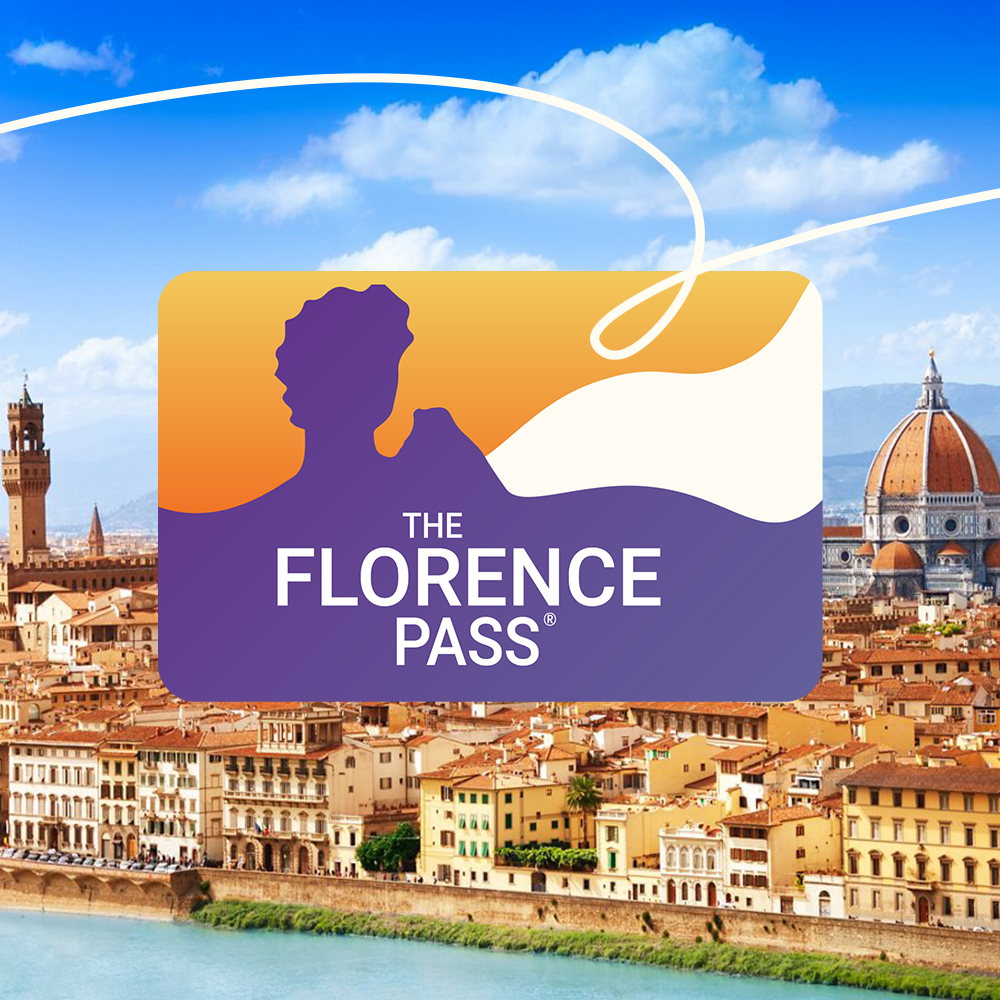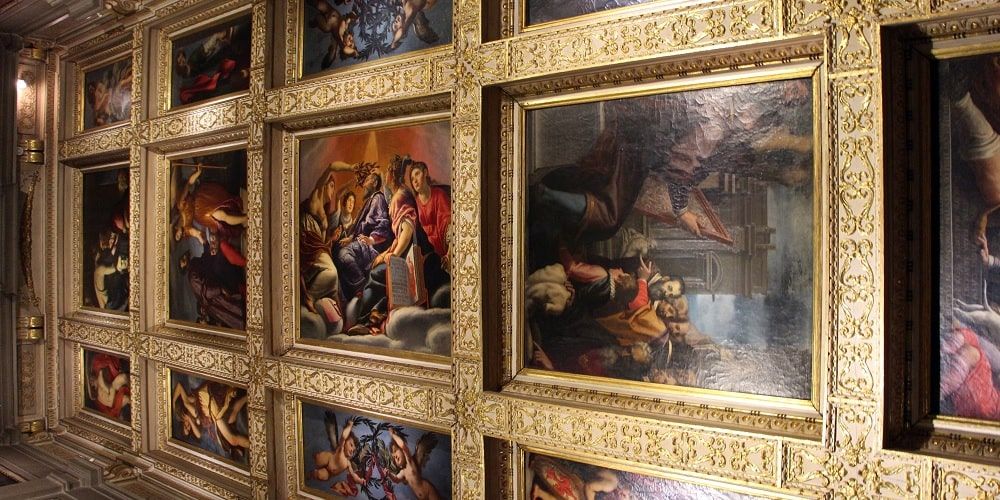L’itinerario, che ci porterà tra piazze e vie della città, ma anche dentro a musei veri e propri, può essere percorso in autonomia e naturalmente in più giornate, per poter godere in tutta tranquillità delle meraviglie cMichelangelo Buonarroti, a Tuscan by birth who grew up in Florence, left in the Cradle of the Renaissance a deep mark witnessed by his works that we still find in museums and squares around the city.
Therefore, we will follow an ideal itinerary in Florence among Michelangelo's masterpieces, starting with his most famous work – David – and going on to other sculptures and paintings, including the place of his burial. For those who want to take advantage of the day to visit museums and attractions before the festivities, some smart solutions allow for a stress-free cultural experience. One example? There are digital passes, such as the Florence Pass, which include the main entrances, ideal for those who want to explore the Uffizi, the Duomo Dome or the Accademia Gallery with priority access and a few extra perks.
The itinerary will take us through the squares and streets of the city, but also inside museums. It can be covered independently and, of course, over several days, so that you can enjoy the wonders you will encounter at leisure.
Book your Florence Pass now
Itinerary in Florence discovering the Florentine soul of Michelangelo

Born in a small town in the province of Arezzo, Michelangelo moved to Florence with his family while he was still an infant. Although he spent most of his life in Rome, he always felt a Florentine, and in this city, his imprint has remained vivid and intact through the centuries. Florentines love the city's iconic sculptor, his artistry, his boldness and his spirit. This itinerary in Florence will take us through its most important works and most famous attractions.
Casa Buonarroti Museum
We start our tour from Via Ghibellina, where we find the Casa Buonarroti Museum. Contrary to what the name suggests, Michelangelo did not live here. He bought the house with the money he earned in Rome, and he left it to his nephew, who decided to use the house as a place of memory and celebration of his famous ancestor. Many drawings and early works by Michelangelo are preserved here. In particular, a collection of Michelangelo's autograph drawings and two famous marble reliefs, The Madonna of the Stairs and The Battle of the Centaurs.
Basilica of Santa Croce: Michelangelo’s tomb

Basilica of Santa Croce, Florence
From the family home we continue on our way to the nearby Basilica of Santa Croce where Michelangelo was buried. Michelangelo actually died in Rome and his body was laid to rest in the Church of the Holy Apostles but, his nephew secretly transported his body to Florence, where he had been missing for thirty years, to bring it back to the city of his origins and family. Fearing that he might be obstructed, he hid the body in a roll of cloth but when he arrived at the Basilica of Santa Croce a huge crowd was waiting for him. The Duke Cosimo I de' Medici ordered "that Michelagnolo be given an honored place in Santa Croce," and he himself donated the marbles for his tomb.
Michelangelo's tomb was thus designed by Vasari. Above the sarcophagus appears the bust of Michelangelo, and at his feet, three figures representing Painting, Sculpture and Architecture mourn the passing of the great master.
Bargello Museum: Bacchus and Tondo Pitti

Michelangelo's Baccus at the Bargello Museum, Florence
Once out of the Basilica of Santa Croce, the next stop is the nearby Bargello Museum, home to the Florence's ancient Palazzo del Podestà. Here, among works by Donatello, Cellini and Giambologna, an entire room is dedicated to Michelangelo.
In particular, we find the Bacchus, a marble sculpture of the god Bacchus depicted as a vacillating drunken youth, and the Tondo Pitti, a bas-relief with a religious subject.
Piazza della Signoria and David

Piazza della Signoria, David
From the Bargello Museum we walk a few minutes to Piazza della Signoria, a real open-air museum where, at the entrance to Palazzo Vecchio, we find Michelangelo's iconic work, perhaps the best known in the world: the David. Placed "furnished and uncovered with everything," it is exposed to the elements and facing southwest as a sign of defiance to enemy populations ready to attack Florence. Even at the time, the statue aroused great success and now is still considered a masterpiece, one of the emblems of the Renaissance and a symbol of Florence.
Of course, it could not be left like that, exposed to adverse weathering and ill-intentioned people of all kinds, so the original was replaced by a copy and moved inside the Galleria dell’Accademia, which we will visit later on our itinerary.
Palazzo Vecchio: The Genius of Victory

Palazzo Vecchio, Florence
We now enter through the great door at the entrance of Palazzo Vecchio, now the seat of the city hall. Inside, in the majestic Salone dei Cinquecento, one of Michelangelo's most beautiful statues is preserved: The Genius of Victory, made for the tomb of Pope Julius II Della Rovere.
Tondo Doni at the Galleria degli Uffizi

Tondo Doni, Uffizi Museum
A visit to Florence cannot be said to be complete without a stop at the Uffizi Museum. Some of the world's oldest and most famous works of art are preserved here. Not only Michelangelo, then, but also Botticelli's Birth of Venus and Allegory of Spring, works by Giotto, Cimabue, Leonardo da Vinci and Titian. And a room is dedicated to Michelangelo with at the center the Tondo Doni, Michelangelo's only finished canvas.
Opera del Duomo: Pietà Bandini
Let’s now turn back toward the Duomo to visit the Opera del Duomo Museum. Here is preserved one of Michelangelo's most interesting masterpieces: the Pietà Bandini, sculpted in Rome and designed as a monument for his own burial. The sculpture depicts Nicodemus, in the guise of Michelangelo himself, supporting the body of Christ flanked by Mary and Magdalene.
Galleria dell’Accademia: the real David

Michelangelo's David at the Galleria dell'Accademia
Not far from Piazza del Duomo there is the Galleria dell’Accademia. Here, as we said, is preserved the "real" David, the original. Our tour of Michelangelo's life and works reaches its climax where millions of visitors line up each year to admire a worldwide and immortal masterpiece.
The 5.50-meter block of marble from which a 25-year-old Michelangelo extracted the David arrived from the marble quarries of Carrara, via sea and river. The work had been commissioned by the Opera del Duomo for the Cathedral of Santa Maria del Fiore and depicted a young David with a stone in one hand and a sling in the other. More than five tons of marble are molded with the body in tension, an intense expression of the eyes, the contraction of muscles and sinews, and the raised veins where blood seems to flow. The statue immediately aroused the admiration of the Florentines, and a commission decided that it should be placed at the entrance to Palazzo Vecchio in order to represent the strength and independence of Florence.
Our itinerary in Florence ends at Piazzale Michelangelo with the third David

David's copy made in bronze at Piazzale Michelangelo
But the Davids do not end there... With a short but enchanting walk from the historic center, it is possible to reach the most panoramic and breathtaking point of the city: pizzale Michelangelo (indeed!).
From here you can enjoy the view of the city from above: you will recognize all the places visited during the tour, first of all the Duomo, Palazzo Vecchio, but also the Arno River that cuts the city in two and the hills that surround it. In the center you will see another David! This time, it is a copy made of bronze, observing his city from above.
About the author
Written on 13/11/2023






Eleonora Tedeschi
Discovering one the greatest Renaissance artists, we take you on an itinerary in Florence in the footsteps of Michelangelo through the city.